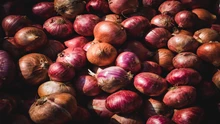
During the Rabi season, one of the crops grown is oats. It is a valuable cereal crop as well as a fodder crop. Oats have various health benefits, including being high in protein and fibre, which aids in weight loss, blood pressure regulation, and disease resistance.
Oats can also be used to make straw or dry fodder. The cultivation of oats and wheat crops is remarkably similar. Oats grow best in temperate and subtropical areas. So, let us go through oats cultivation in-depth:
Cultivation of Oats
Suitable climate
-
The cold and dry climate is thought to be ideal for oat cultivation.
-
It is best grown at temperatures ranging from 15 to 25 degrees Celsius.
-
Rainfall should be 80-100 mm
-
Sowing Temperature should be between 20-25°C
-
Harvesting Temperature should be between 25-30°C
Land selection
-
Oats can be cultivated in all types of soil, but loam soil is best for its cultivation.
-
pH should be between 5 - 6.6 for oats.
Field preparation
To ensure good germination of the oat crop, the field must be well prepared. To do so, run two or three ploughs from the native plough in the field or once in the tractor-powered equipment after running the cultivator. The field should then be leveled by running the Pata. Make suitable drainage arrangements in the field.
Advanced Oats varieties
HFO 114:- It is also known as Haryana Oats 114. It is a high-yielding variety of 500 quintals of green fodder per hectare, which grows very fast after harvesting, usually, 2 to 3 cuts are taken.
UPO 94:-This oat variety has a high yield, producing 500 to 550 quintals of green fodder per hectare. This variety is resistant to scorching diseases.
Kent:-This variety cooks in a medium amount of time, making it ideal for northern India's plain mountain regions. It is resistant to scorching diseases. The yield capacity of green fodder is 500 to 550 quintals per hectare.
Algerian:- This type of plant remains green for a long time. It is an early maturing variety of 145 to 155 days, about 400 to 500 quintals of green fodder is available from one hectare.
Other species :- FOS-1, UPO-13, UPO-50, UPO-92, UPO-123, UPO-160, OS-6, S-8, O- S7, O- S9, O- L88, O L- 99, JHO- 817, JHO- 822K- 10, Wide leaf Palampur- 1, N. P.-1, N. P.- 2, N. P-1 Hybrid, NP-3 Hybrid, NP-27 Hybrid, BS-1, B-2S, Biston-2 Biston-11, Brackle-11, Brackle-10 etc. Variety is also very popular.
Sowing of Oats
Time of sowing
Although November is the best month for sowing oats for maximum yield, it can be done until the first week of December depending on the weather and availability of fodder.
Spacing
Spacing of 25-30 cm should be kept between rows.
Depth
Depth should be kept between 3-4 cm.
Method of sowing
It is done through the drilling method, zero tillage drill.
Seedling and treatment
Seed Rate
For fodder:- 100 kg of seeds per hectare.
For grain:- 80 kg of seeds per hectare is

Seed Treatment
To protect seeds from various fungal and pathogenic diseases, it should be treated with Captan or Thiram at 3 grams per kilogram.
Fertilizers Requirement (kg/Acre)
Urea SSP MOP
66 50 -
Nutrients Value (kg/Acre)
Nitrogen Phosphorus Potash
30 8 -
Weed Control
-
The oat crop left for fodder requires less fertility because weeds do not thrive due to the high number of plants, but weed control is beneficial in crops taken for seed production.
-
To control wide-leaf weeds, spray 500 g 2, 4-D using 600 liters of water per hectare.
Irrigation
-
The first irrigation should take place between 20 and 25 days following sowing.
-
Drainage should be done properly.
-
The amount of irrigation required is determined by the kind and temperature of the land.
-
For good output, 3 to 4 irrigations are required.
-
Moisture in the fields is required for the formation of healthy seeds.
-
Seed production declines as a result of a lack of moisture.
Oats Harvesting
-
After 75 to 85 days of sowing, 50% of the oat crop can be harvested.
-
Harvesting 50% of crop can give about 400 quintals of green fodder.
-
The crop produced for two harvestings should be harvested in 55 to 60 days, with the second harvesting occurring after 50% flowering.
-
This harvest will yield around 550 quintals of green fodder per hectare.
-
The plants should be harvested at a height of 4 to 5 centimeters.
-
After 4-5 months of sowing, they are totally mature and ready to harvest, or you may say they can be harvested in early April.
(Also read: Importance Of Soil Fertility And Ways To Improve It)









